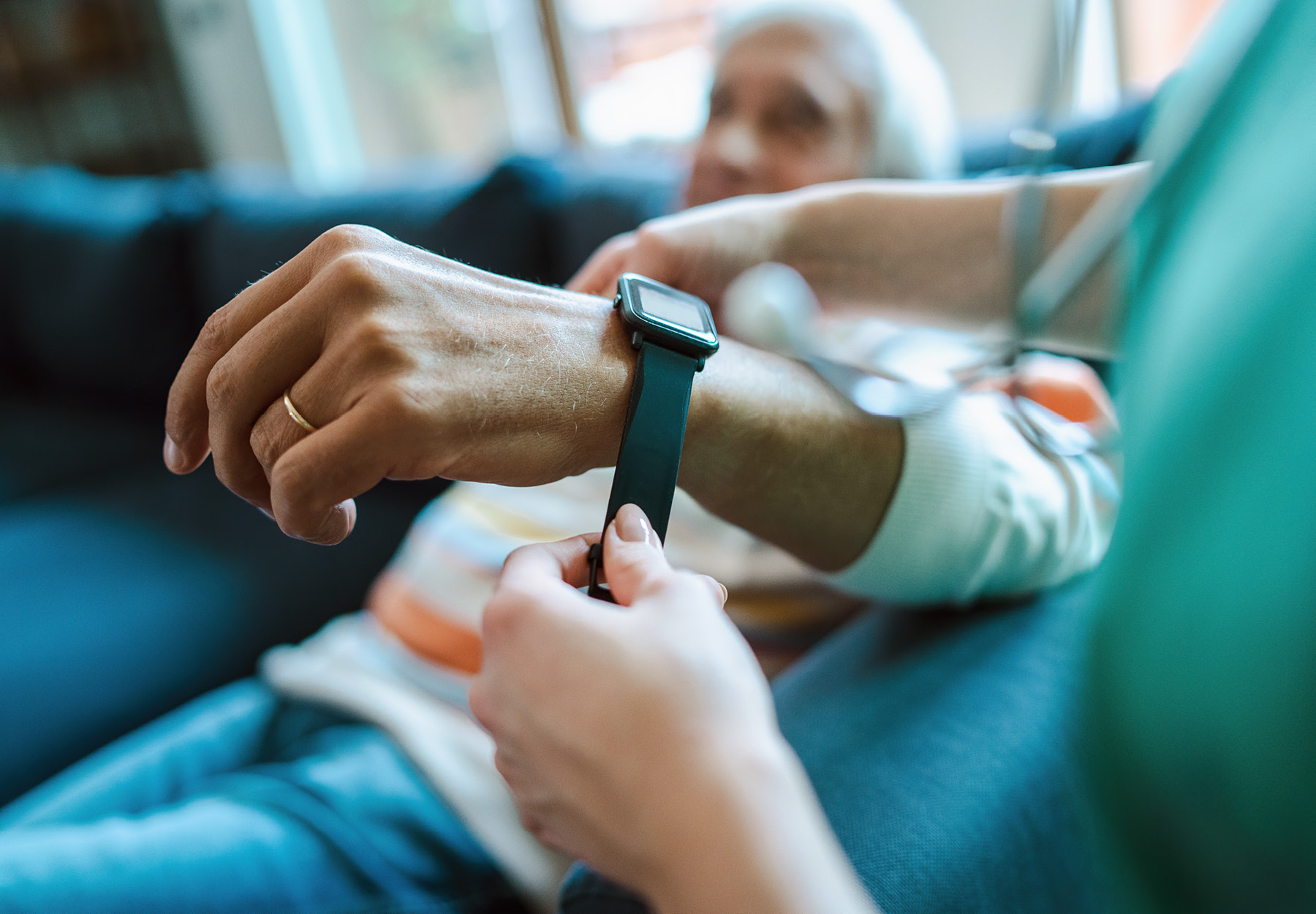While many of us would like to forget the current pandemic, COVID-19 outbreaks are still a problem, with many countries again seeing rising infections despite reductions in testing, raising the possibility that disruptions to daily life could return. However, two recent studies show that the combination of artificial intelligence (AI) and wearable devices could provide another tool for the early detection and management of COVID-19 cases.
The BMJ Open Study
In the first study, published in the June 2022 issue of BMJ Open, researchers used the Ava bracelet, a device originally designed for tracking various metrics to monitor fertility in women, to collect data from 1,163 participants in a national cohort study in Liechtenstein. The app accompanying the bracelet was modified to include COVID-19-specific questions for study participants.
The researchers wanted to see if there were differences in participants’ physiology that could allow them to predict presymptomatic COVID-19. They could then use the data to train a machine learning algorithm that could potentially be utilized to screen populations for the disease. The participants wore their bracelets each night to track five physiological parameters:
- Respiratory rate
- Heart rate
- Heart rate variability
- Wrist-skin temperature
- Skin perfusion
Throughout the study, the participants were tested for COVID-19 via either molecular and/or serological assays, with 127 people testing positive for the illness. Of those who tested positive, the researchers found “significant changes” in the five parameters measured with the bracelets “during the incubation, presymptomatic, symptomatic[,] and recovery periods of COVID-19 compared with baseline.” The researchers used data from a selection of these COVID-19-positive individuals to train their recurrent neural network algorithm to detect COVID-19 before symptom onset, and tested the algorithm on another selection of those who tested positive for the disease.
Results
From the results of those tests, the researchers concluded that “[w]earable sensor technology can enable COVID-19 detection during the presymptomatic period” and their algorithm successfully detected 68 percent of COVID-19 cases two days before symptoms emerged. The research team plans to further train and validate the algorithm in another study.
The JAMIA Open Study
In the second recently-published study involving detecting COVID-19 with a combination of AI and wearable technology, researchers from New York City’s Icahn School of Medicine at Mount Sinai and their colleagues explored if they could detect active COVID-19 infections in healthcare workers using physiological metrics collected from Apple Watches. Specifically, the team looked at heart rate variability measurements along with resting heart rate. Their aim was to find out if a combination of wearable devices and AI can detect COVID-19 infection before diagnosis via PCR testing.
Published in the July 2022 issue of JAMIA Open, the multicenter observational study involved 407 healthcare workers from seven different hospitals who used a custom app with their Apple Watches to fill out daily surveys related to diagnosis and symptoms of COVID-19. Over the course of the study, 12 percent (49) participants tested positive for COVID-19 via PCR testing.
The team examined five different machine learning approaches to predict COVID-19 infection using the training sets provided from the Apple Watch data, determining that gradient-boosting machines did the best job at identifying and predicting infection with the COVID-19-causing virus SARS-CoV-2. That algorithm offered an average sensitivity of 82 percent and an average specificity of 77 percent.
Results
Of the metrics collected, they found that “parameters describing the circadian heart rate variability mean (MESOR) and peak-timing (acrophase), and age” were the best predictors of SARS-CoV-2 infection.
They concluded that “[while] further validation is necessary,” their algorithm trained from the collected Apple Watch data “may be helpful to monitor large numbers of people for possible infection with SARS-CoV-2 and help direct testing toward high-risk individuals.” While both studies had limitations, such as sporadic data collection and limited study participants, the researchers say their results show that the combination of AI and wearable technology offers a promising, non-invasive screening tool for COVID-19. Though the authors of the BMJ Open study acknowledge that PCR testing remains the best method to confirm COVID-19 cases, as the world continues to emerge from COVID-19 and battle outbreaks, and as PCR testing becomes less widespread in some countries, algorithms trained from wearables data could identify those most at risk of infection so testing resources can be directed accordingly.
